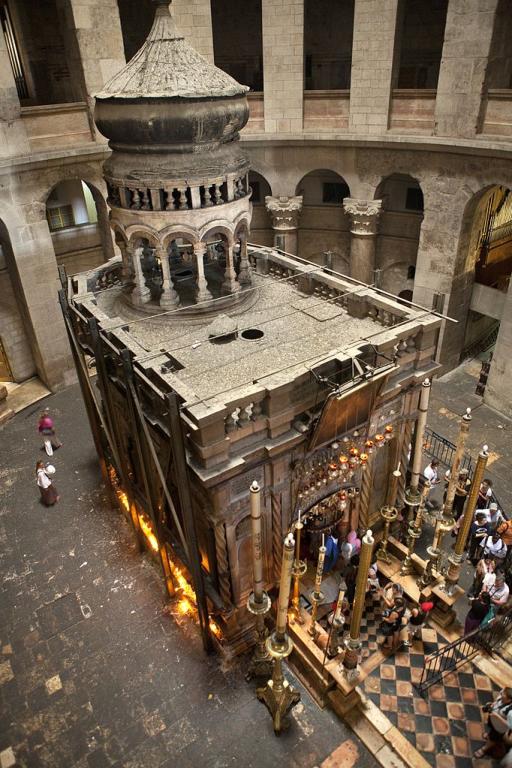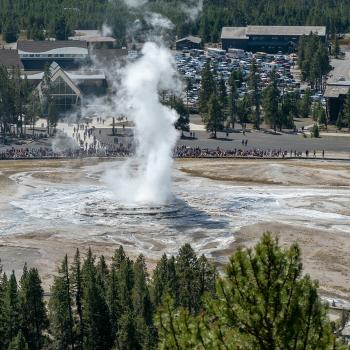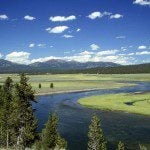
Wikimedia Commons public domain photograph
Professor William J. Hamblin and I published this column in the Deseret News for 1 April 2016:
The essential message of Easter is that Jesus rose from the tomb. Visiting the tomb of Jesus began on the first Easter, when some of Jesus’ female disciples — and later Peter and John and others — visited the empty tomb in search of confirmation of the resurrection (Matthew 28, Mark 16, Luke 24, John 20). According to ancient tradition, the earliest Christians continued to remember and visit the tomb of Jesus.
This continuity of communal memory was very possibly disrupted by the Roman destruction and devastation of Jerusalem during the two Jewish revolts of A.D. 64-70 and 132-136. In the end, all Jews were banished from Jerusalem and a new pagan Roman city, called Aelia Capitolina, was built on its ruins. The Romans built a temple to Jupiter on the site of the ruined Jewish temple, and a temple to Venus farther west. They also shifted the layout of the city’s walls. However, although all Jews were banished, gentile Christians were permitted to live in the Roman Jerusalem, and they could, thus, have maintained a memory of the tomb’s location.
When Constantine converted to Christianity and became sole emperor of Rome, he undertook a complete transformation of Roman Jerusalem into a uniquely Christian town, building massive Christian churches in the city.
The most important of these was the Holy Sepulcher (see churchoftheholysepulchre.net). When Constantine’s agents asked local Christians about the location of the tomb of Jesus, they replied that it was under the Roman temple of Venus.
Excavating the area for the foundation of their new basilica, the Christian engineers did indeed discover first-century Jewish tombs. One of these was transformed into a monumental tomb around which the great church was built. Although partially destroyed over the centuries by earthquakes, fire and war, the Holy Sepulcher that can be visited today is indeed built on the ruins of the Roman temple of Venus and a first-century Jewish cemetery.
The question remains: Is this basilica built on the site of the original tomb of Jesus, or merely atop one of the many Jewish cemeteries that surrounded Jerusalem at the time of Christ?
In the 19th century, Western Protestants first started visiting Jerusalem as tourists and pilgrims — most famously Mark Twain (“Innocents Abroad,” 1869). Protestants were put off by both the Catholic and Orthodox liturgy and the profusion of medieval art and icons that adorned the Holy Sepulcher. Many felt uncomfortable worshipping there.
Furthermore, the eastern Christians who controlled the Sepulcher generally did not allow Protestant services. Many Protestant scholars in the 19th century began to argue that since the Holy Sepulcher was inside the walls of Jerusalem, it could not be the location of Christ’s crucifixion, which was clearly outside the walls (John 19:20). They therefore began to search north of the walls of the Old City.
The prominent rocky outcrop in that area was thought to nicely match the location of Golgotha (“Place of the Skull”) and is now popularly known as “Skull Hill.” (Some also feel that the outcrop looks like a skull, though the rock face has doubtless changed in form over the past 2,000 years, through earthquakes and human quarrying.) When an ancient tomb was discovered nearby in the mid-19th century, many took it to be the lost tomb of Jesus. Since then, the area around that tomb has been preserved and turned into a beautiful garden called the Garden Tomb (see gardentomb.com).
Today, many pilgrims still visit this peaceful site, and many Protestants hold religious services there. (Members of The Church of Jesus Christ of Latter-day Saints can visit but are not allowed to hold Sunday services, which are generally only interdenominational.)
So which is the authentic tomb of Jesus? Unfortunately, we simply don’t know; chances are that the tomb of Jesus has been destroyed or remains buried somewhere under the streets of modern Jerusalem.
Archaeologically, most scholars believe that the burial chamber of the Garden Tomb, which has been repeatedly carved and reused, doesn’t seem to match the proper archaeological context from the time of Jesus.
If the ancient Christian communities of Jerusalem managed to remember the location of the tomb of Jesus until the time of Constantine, it is possible that the modern Church of the Holy Sepulcher rests near Jesus’ ancient tomb.
Posted from Centerville, Utah











